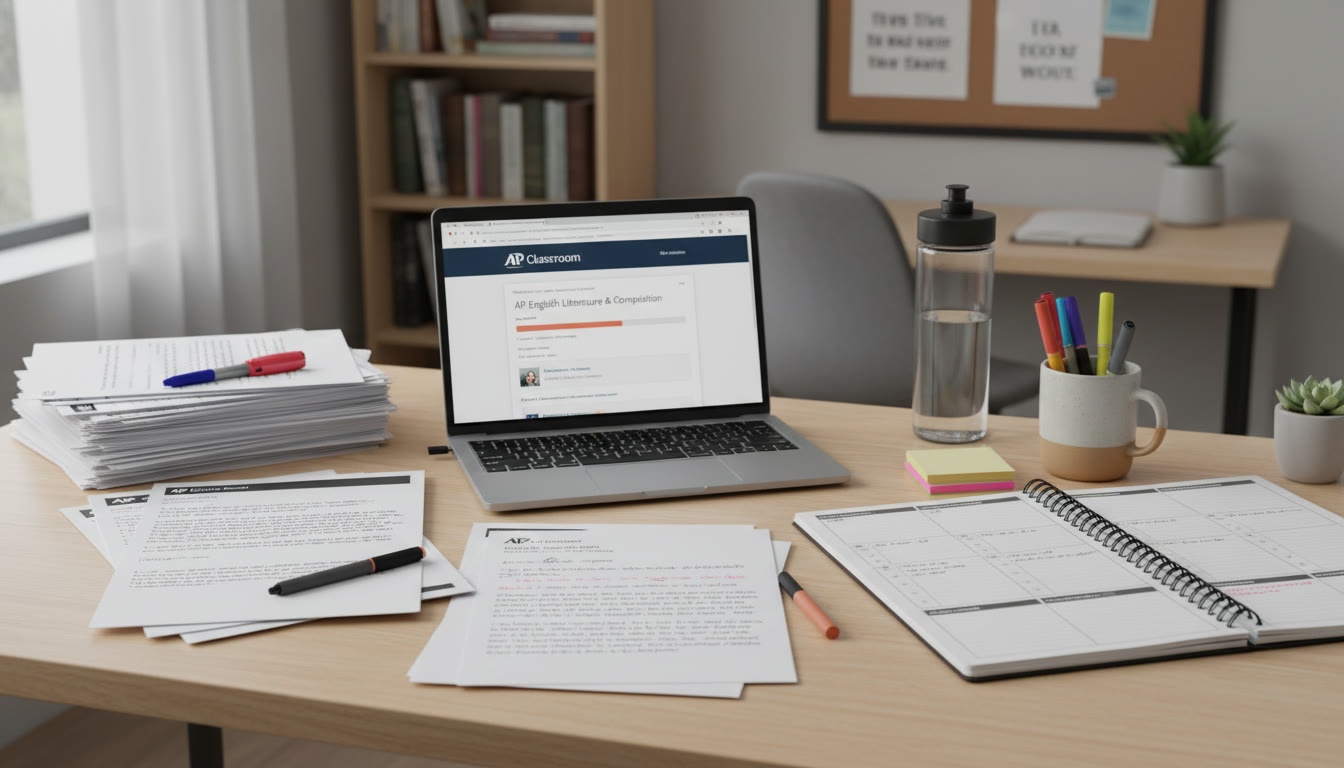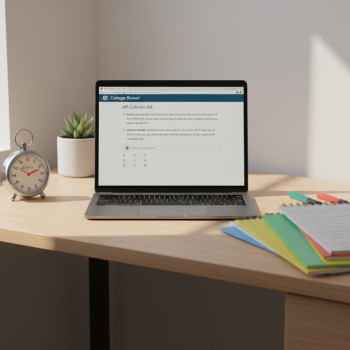Predicted vs Final AP Scores in the UK: A Clear Guide for Students and Parents
If you’re a student in the UK taking AP exams or a parent helping your child through the process, the difference between predicted scores and final, official AP scores can feel like a mystery. In this blog we’ll pull back the curtain: what predicted AP scores mean, why they often differ from the final score, how UK universities and US colleges view AP results, and practical steps to turn predictions into the scores you want.

Why Predicted Scores Exist — and Who Gives Them
Predicted scores are primarily school-based estimates of a student’s likely performance on an upcoming external exam. In the UK context this often mirrors how teachers provide predicted grades for A-levels or predicted references for university applications: your AP teacher (or the school’s AP coordinator) will look at your coursework, classroom assessments, mock exams, participation, and progress to assemble a best-guess of your future performance.
Predicted AP scores serve a few purposes:
- They help students understand their current standing and where to focus study time.
- They guide school recommendations, college counseling conversations, and sometimes application decisions where immediate exam results aren’t available.
- They inform decisions about whether to take an AP Exam, which colleges to target, and what score-sending strategies to use.
Who provides predicted scores?
Usually your AP teacher, head of department, or an AP coordinator at your school will provide the prediction. It’s a professional judgment, not an automated estimate — and that human element is both a strength and a source of variance.
Why Predicted and Final AP Scores Differ
It’s normal for predicted scores and final scores to diverge. Here are the main reasons:
- Assessment environment: Classroom tests and mocks are low- to medium-stakes and differ in format, time pressure, and stress compared with an official AP Exam taken under timed, proctored conditions.
- Coverage and question style: Mocks may not mimic the exact distribution of content or question types on the official exam, especially if a teacher emphasizes certain topics more than the exam does.
- Marking and scaling: Teachers’ internal marking and expectations may differ from AP scoring rubrics used by trained AP readers and automated scoring systems for multiple-choice sections.
- Exam day factors: Fatigue, anxiety, illness, or even misreading a question can affect performance in ways that a teacher can’t foresee during prediction.
- Progress or setbacks between prediction and exam: Homework completion, extra tutoring, and focused revision can lift results — while missed lessons or personal issues can lower them.
How big is the gap usually?
There’s no single number that applies to every student. Some students find predictions are spot on; others see differences of a full grade or more. What matters is recognizing patterns: where your weaknesses show up, which topics cause the most confusion, and whether you improve with targeted practice.
How Colleges — UK and US — Treat Predicted and Final AP Scores
Understanding how institutions treat these scores will help you plan application and score-reporting strategies.
UK universities
Many UK universities are familiar with AP Exams, particularly for students applying from international or US-style curricula. However, the role AP scores in UK admissions is variable:
- Some universities accept AP scores for advanced standing or credit, but policies vary by program and by institution.
- For offers made before official AP scores are available, universities often rely on predicted grades, personal statements, reference letters, and standardized tests where applicable.
- If a final AP score comes in substantially below predicted levels, universities may check whether conditions, contextual information, or mitigating circumstances explain the difference before taking action. Clear communication and evidence of sustained ability (e.g., mock improvements or teacher commentary) can help.
US colleges
US colleges are the original audience for AP scores. Their main interactions with AP are:
- Using AP scores to grant college credit or placement once official scores are released in July (for May exams) or as per the College Board schedule.
- Relying more on transcripts, coursework rigor, essays, and test scores (SAT/ACT), rather than predicted AP grades, during admissions decisions. Predicted AP scores can inform counselor recommendations but are not a formal component of an application like a transcript or official test result.
In short: predicted scores help paint a picture; final AP scores are the official currency for college credit and advanced placement.
Turning Predictions Into Results: Practical Strategies
If your predicted score is close to your target, or even below it, there’s meaningful work you can do to bridge the gap.
1. Diagnose precisely
Not all gaps are the same. A student who misses a 5 by one or two specific FRQ subparts needs a different plan than someone who consistently misses multiple-choice questions in one content area. Use AP Classroom resources, past papers, and teacher feedback to form a clear diagnostic.
2. Build a targeted plan — not just more hours
Quality beats quantity. Instead of only increasing study hours, focus sessions on weak skills with active practice: timed FRQs, deliberate question deconstruction, and spaced retrieval. A weekly plan with measurable targets is more effective than open-ended revision.
3. Simulate exam conditions
At least once a week during the last months before your AP Exam, practice under full, timed conditions. If possible, use the exact timing, test materials, and a quiet room. Familiarity with the rhythm of the exam reduces day-of anxiety and helps manage time for each section.
4. Get specific feedback on essay and FRQ rubrics
Free-response questions reward clear structure, use of targeted vocabulary, and explicit linkages to the prompt. Work with teachers or a tutor to practice writing responses and get rubric-based feedback. Iterative redrafting builds precision and confidence.
5. Balance content review with exam technique
Understand what types of errors you make — content gaps, careless mistakes, or timing issues — and address them accordingly. For many students, a small technical change (like reading the last part of a multi-part FRQ more carefully) yields a bigger score gain than a vague last-minute content binge.
6. Look after wellbeing and logistics
Sleep, hydration, nutrition, and a calm exam routine matter. Make sure you know the exam location, start time, and what materials you need. Reduce last-minute friction so your energy goes into thinking, not logistics.
How to Use AP Score Reporting to Your Advantage
When scores are released, you have options about sending them. In many AP programs, students receive one free score send per exam year — use it strategically.
| Action | When to Use | Why It Helps |
|---|---|---|
| Send your best AP score to a target university | After score release in early July (for May exams) | Official scores can earn placement or credit — sending your best or only scores intentionally can influence credit decisions. |
| Withhold or cancel a score | Only if a score is drastically lower and you prefer not to share it | Can prevent a low result from being on your official score report, but be cautious — canceled scores are irreversible. |
| Send scores to multiple institutions | When applying widely to UK or international universities | Demonstrates college-level readiness across multiple applications; fee may apply for extra sends in some systems. |
Timing tip for UK applicants
Many UK offers (especially conditional offers) can be based on predicted performance and other credentials. If you don’t get offers until after AP scores are released, sending your official AP scores can strengthen your case, particularly when they exceed predictions.
Real-World Example: From Predicted 4 to Final 5 — What Changed?
Consider Emma, a UK student who was predicted a 4 in AP Biology after a handful of strong class tests but inconsistent FRQ practice. She wanted a 5 to be competitive for a selective biomedical program.
- She diagnosed the issue: poor FRQ structure and slow timing.
- She created a six-week plan emphasizing one timed FRQ and one multiple-choice block per day, reviewed rubric expectations with her teacher, and used peer review to incorporate feedback quickly.
- Emma also practiced two full timed exams under exam conditions.
- On exam day she managed time better, wrote clearer FRQs, and improved her answer completeness.
Result: her final AP score was a 5. This outcome highlights how targeted practice, rubric-driven feedback, and simulated exams can change final results—even within a short window.
When a Final Score Is Lower Than Predicted: Next Steps
If your final score falls short of the predicted grade, don’t panic. Evaluate, recover, and plan:
- Ask for detailed feedback from your teacher on where you lost marks; treat this as a diagnostic for future improvement.
- Check whether sending or withholding that score makes sense for your college plans. Discuss this with your counselor — some schools will want to see all official scores, while others primarily consider your transcript and test scores separately.
- If the AP score is essential for placement, explore retaking the exam the next year or taking equivalent university-level introductory courses to prove your mastery.
How Tutoring and Personalized Support Help Close the Gap
One-to-one guidance can be decisive when a predicted score sits tantalizingly close to a goal. Personalized tutoring helps in three big ways:
- Targeted diagnosis: Tutors spot the specific question types and concepts that cost you marks, and help you prioritize revision time.
- Tailored practice and feedback: Regular, rubric-focused reviews of FRQs and timed practices close the gap between classroom performance and AP expectations.
- Confidence and strategy: Tutors teach test strategy, pacing techniques, and mental preparation that translate to steadier exam-day performance.
For students seeking that edge, Sparkl’s personalized tutoring can fit naturally into the plan — one-on-one guidance, tailored study plans aligned to AP rubrics, expert tutors with subject knowledge, and data-driven insights into progress. When used as part of an intentional study strategy, such support often helps students turn a predicted 4 into a final 5 or solidify a predicted 5 against exam-day nerves.
Practical Checklist: Two Months Before the AP Exam
Use this checklist to convert your predicted potential into a final result:
- Complete a full diagnostic test under timed conditions to confirm strengths and weaknesses.
- Build a weekly plan with at least one full timed practice exam every 7–10 days.
- Schedule targeted sessions with your teacher or a tutor focused on FRQs and weak content areas.
- Practice exam techniques: time management, question prioritization, and answer structure.
- Keep a simple log of mistakes and revisit them in spaced intervals.
- Plan logistics for exam day: location, materials, and sleep schedule.
Myths and Misconceptions — Debunked
Let’s clear up a few persistent myths:
- Myth: “Predicted scores are meaningless.” Reality: Predicted scores are useful signals and starting points — they’re not destiny. They guide focus but don’t lock your final outcome.
- Myth: “Final AP scores are totally random.” Reality: Final scores are the product of demonstrated knowledge and exam technique. With targeted work, scores move in predictable ways.
- Myth: “If my score is lower than predicted, my college prospects are ruined.” Reality: Admissions use many data points. A single AP result rarely overturns a strong application when context and other achievements are clear.
Bringing It All Together — A Short Roadmap
Here’s a concise roadmap you can follow whether you’re a student aiming to beat your predicted AP score or a parent helping your child prepare:
- Get a cold, honest diagnostic and identify the three biggest score killers.
- Adopt an evidence-based study plan: targeted practice, timed exams, and rubric-driven feedback.
- Use predicted scores as a guide, not a verdict — update strategies when new evidence (practice tests) emerges.
- Consider tailored support if you need acceleration or precision — a focused tutor can change the marginal improvements into a tangible grade jump.
- Finalize score-sending decisions after official scores are released — think strategically about where credit and placement matter most.

Final Thoughts for Students and Parents
Predicted vs final AP scores is not a battle of fate — it’s a process. Predictions give you visibility into likely outcomes; your preparation shapes the final result. With focused diagnostics, deliberate practice, exam simulation, and feedback, you can consistently improve performance.
Parents: be a steadying presence. Encouragement, logistical support, and access to resources (quiet space, practice materials, and, if needed, targeted tutoring) make a real difference.
Students: treat predictions as a helpful mirror but not a limitation. Use them to prioritize, then attack those priorities with ruthless clarity.
How to Get Help If You Need It
If you want structured, personalized support, look for tutoring that offers subject-expert tutors, tailored plans, and measurable progress tracking. Sparkl’s approach — 1-on-1 guidance, tailored study plans, expert tutors, and AI-informed insights into strengths and weaknesses — is designed to fit naturally into a student’s routine and turn predictions into stronger final outcomes when used thoughtfully.
Quick wrap-up
Predicted AP scores are a starting point; final AP scores are the finish line. Both matter, but in different ways. Understand the gap, design targeted practice, use smart feedback, and be deliberate about score reporting. With a calm plan and the right support, the score you want is within reach.
Good luck — and remember: steady, focused work beats panic every time. If you’d like a sample two-week study plan or a rubric-based FRQ checklist to use with your teacher or tutor, say the word — I’ll draft one you can start using tomorrow.
























No Comments
Leave a comment Cancel